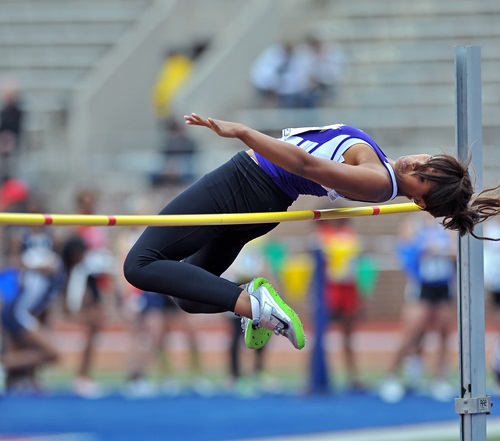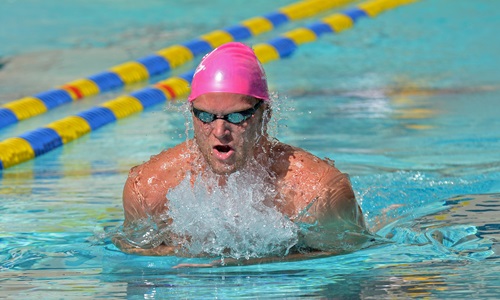
All photos courtesy of © Aspenphoto | Dreamstime.com
Something to consider: When runners are picked to represent the USA in the Olympics, an overwhelming percentage come from college track & field programs.
In fact, it’s not just runners; in the Paris Olympics alone, more than two-thirds of all athletes came from college teams: with, according to the article above, “1,200 current, former and incoming student athletes from all NCAA three divisions competing for 125 teams and countries. A total of 251 NCAA schools from nearly 60 conferences were represented in this year’s Olympics roster.”
And, the article noted, Team USA included 14 squads composed entirely of NCAA athletes. Globally, more than 800 college athletes competed on the teams of for various countries. In terms of national representation, the United States led the pack with 386 college athletes from 138 schools and 19 sports.
Unfortunately, college sports programs, particularly those that do not get as much attention as, for example, mainstays like basketball and football, are threatened by budget cuts – which can result in the closure of programs.
It seems, however, that in their haste to look at the bottom line, colleges are missing a key piece of the equation, which could be provided by sports tourism.
The threat to college running programs was most recently noted in an article published on the website of the U.S. Track & Field and Cross Country Coaches Association (USTFCCCA). At the opening session of the organization’s convention, CEO Sam Seemes delivered an address that pointed to the problem as an area of greatest concern.
 “Let me be blunt,” Seemes noted. “Our sports are under siege. Not in some distant future, but right now. The threats are real and immediate: Shrinking opportunities for student-athletes, vanishing budgets, disappearing scholarships, reduced coaching positions and complete program elimination, replaced by sports perceived as more valuable. If you think I’m being an alarmist, wake up. Every headline, every report, every analysis of collegiate sports points to an uncertain future for programs beyond football and basketball.”
“Let me be blunt,” Seemes noted. “Our sports are under siege. Not in some distant future, but right now. The threats are real and immediate: Shrinking opportunities for student-athletes, vanishing budgets, disappearing scholarships, reduced coaching positions and complete program elimination, replaced by sports perceived as more valuable. If you think I’m being an alarmist, wake up. Every headline, every report, every analysis of collegiate sports points to an uncertain future for programs beyond football and basketball.”
USA has long been a leader in the Olympic medal count in track & field (and about 1,000 schools still offer track & field, creating plenty of opportunities for competition) but the cuts in college programs could be exacerbated by a lack of programs at the youth level. For example, only about 20 states have sanctioned competition for javelin throw at the high school level. Fewer field events programs being contested at the youth level will lead to a smaller pool of athletes ready for competition at higher levels.
But what colleges seem to be missing in budgeting is the consideration of what meets (and even championships) put on by the lower profile sports can bring to the table in terms of economics – if they are marketed correctly. And examples of how to do that right can be found in the youth sports travel industry, which provide a far more compelling picture of not just the marketing of those events but the economic impact they can have.
In SDM’s most recent Champions of Economic Impact in Sports Tourism awards program, for example, one of the highest-grossing event was the 58th AAU Junior Olympic Games, which were hosted in Greensboro, North Carolina. That 12-day event, which made $67.69 million and consumed 40,000 room nights, brought in around 15,000 participants, including around 12,000 track and field athletes in the Games’ marquee competition.
But that was hardly all. The 2024 USA Track & Field National Junior Olympic Track & Field Championships, held in College Station, Texas, brought in $10.83 million and used 22,324 room nights. That event, held on the campus of Texas A&M University, also brought in thousands of family members, supporters, coaches and diehard track fans.
And other college programs, such as women’s triathlon, which will soon be an NCAA championship sport, is flying under the radar – despite the fact that triathlon is a major money-maker when marketed correctly. Another winner in SDM’s awards program was the IRONMAN 70.3 Oceanside in Oceanside, California, which made $4.9 million – not insignificant for a mid-size market.
And these are just three examples of sports that might be outside the mainstream for many but are making money for cities. Many colleges that are looking at the bottom line are paying more attention to higher-profile sports (while giving far less attention, including marketing efforts, to smaller programs), and failing to see how the sports travel industry does exactly the opposite, with positive results.
And yes, CVBs and sports commissions are marketing mainstream events like football and basketball – with excellent results – but that’s the difference. They’re marketing them, as well as events like track & field, swimming and more.
 In 2024, Michigan State University saw the graduation of the last students who had participated on the now-defunct swimming and diving team. In 2020, the announcement of the closure of the program was made; the university cited poor infrastructure and finances during the COVID-19 pandemic as leading factors in their decision making.
In 2024, Michigan State University saw the graduation of the last students who had participated on the now-defunct swimming and diving team. In 2020, the announcement of the closure of the program was made; the university cited poor infrastructure and finances during the COVID-19 pandemic as leading factors in their decision making.
But a look into youth sports paints a very different picture of what the sport can be, and what it can mean on an economic level. One of the past SDM award winners was the 2022 OSSSAA Class 5A/6A State Swimming Championship in Edmond, Oklahoma. That single event brought in $1.4 million, not to mention multiple athletes and their families, resulting in plenty of business for the area.
The question, of course, becomes this: When are colleges going to look to sports tourism for the big picture and see that proper marketing of events can make the difference between a program that dies of financial neglect – and one that pays dividends in exposure and economic impact?

